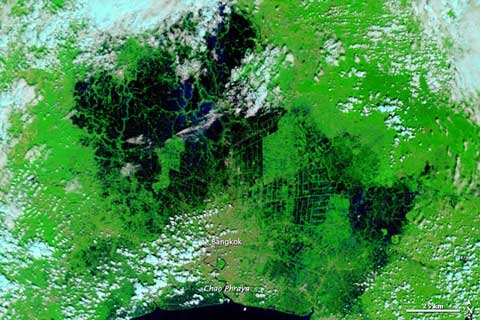[youtube]kYUpkPTcqPY[/youtube]
This astonishing video was shot on Monday as flash flooding hit the Queensland town of Toowoomba after a reported 140mm of rain fell in only 30 minutes. 12 people are confirmed to have been killed in the region, and 90 more are missing according to state premier Anna Bligh. Floodwaters are rising in the state capital Brisbane, with the central business district closed down. Flood levels are expected to top out above the levels reached in 1974 — the previous record holder. I know that Hot Topic‘s readers will join me in wishing the people of Queensland well. This ABC page has a list of relief funds to which you can donate. I can confirm that Skeptical Science’s John Cook is OK, and not expecting any direct impacts. We’ll be talking to him about the floods in the next Climate Show, scheduled for recording next week.
Has global warming had an impact on this event? Watching the deniers quotes The Age saying that the floods are “consistent with (although not proof of) climate change predictions for northern Australia”, and that seems fair. The direct “cause” of the flooding is the current strong La Niña (possibly the strongest since records began, according to AMOS president Prof Neville Nicholls). This phase of ENSO causes warm water to pile up against NE Australia, helping to fuel large rainfall events. The record floods of 1974, for example, were associated with a La Niña event. To make matters worse, over the last year sea surface temperatures around Australia have been running at record levels, as this Bureau of Meteorology chart from their climate summary for 2010 shows:

The recipe seems clear enough: an intense La Niña and record sea surface temperatures combining to cause record floods. A more precise attribution of warming’s influence on the event will have to wait for the studies to be done, but for the time being it certainly looks likely that this is another extreme weather event which has been made worse by recent warming.
Update 13/1/11: Barry Brook at Brave New Climate considers the costs of the floods, and puts them in to the context of the last few years of Aussie weather extremes, and NASA’s Earth Observatory has an image showing rainfall in the Brisbane area, showing that over 200 mm fell in the flash flood regions.
[Nick Lowe]
Like this:
Like Loading...


